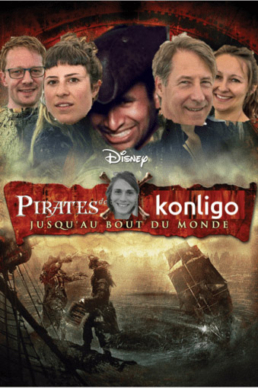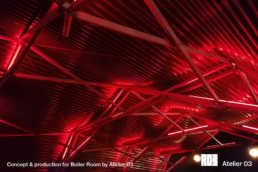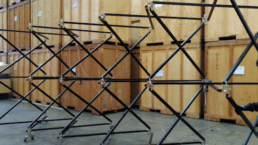Comment rendre les événements plus durables ?
Chaque année, les salons professionnels et grand public génèrent 600 000 tonnes de déchets. Cela fait de ce secteur le deuxième plus gros producteur de déchets après la construction.
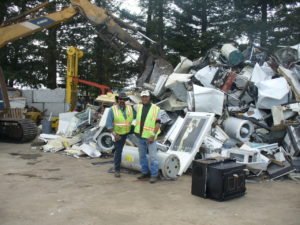
La plupart de ces déchets proviennent de tous les prospectus, affiches, sacs en plastique, catalogues ou échantillons bon marché qui sont offerts aux visiteurs. À cela s'ajoute le plastique qui protège les moquettes lors du montage et la moquette elle-même lors du démontage, qui, dans la plupart des cas, ne sera jamais réutilisée. La moquette du stand est généralement emballée en vrac, et la moquette située dans les espaces communs est recyclée. À mesure que la taille du salon augmente - et la proportion de stands au design personnalisé (ou de stands non réutilisables) avec elle - la quantité de déchets dangereux et de déchets de bois peut augmenter énormément.
Bien sûr, il existe des solutions simples à ce problème. Comme nous vivons aujourd'hui dans un monde très technologique/numérique, certains outils pourraient être très utiles pour réduire les déchets dans les salons et foires. La plupart des gens ont un smartphone et une bonne façon d'éviter tout gaspillage (surtout de papier) est de développer une application ou d'utiliser un code QR pour collecter les données des clients par exemple, au lieu de perdre du temps, de l'énergie et du papier si cela est fait à la main. Un catalogue numérique est également une bonne alternative, d'autant plus utile que le client peut accéder à toutes les informations et parcourir tous les produits sur une tablette. Les exposants peuvent également fournir des sacs réutilisables et des récipients biodégradables, voire réutilisables, pour les boissons et les aliments (assiettes et gobelets en carton ou en bambou, par exemple).
Pourquoi se passer de papier ?
Le passage au zéro papier est un bon moyen de réduire les déchets et les dépenses : vous évitez d'envoyer des invitations en papier et des mémos publicitaires imprimés en créant des pages d'événements en ligne, des applications et en inscrivant les gens par courrier électronique, sur les réseaux sociaux et sur les sites web. De plus, cela permet d'accéder plus rapidement à toutes les informations sur internet puisqu'elles sont accessibles à tout moment. Par exemple, les billets électroniques sont une excellente alternative aux billets imprimés : les clients les ont directement sur leur téléphone et leur badge y est associé. La publicité d'un événement est également une grande source de déchets, qui peut être évitée en communiquant sur les réseaux sociaux et les sites web et non en envoyant des documents imprimés.
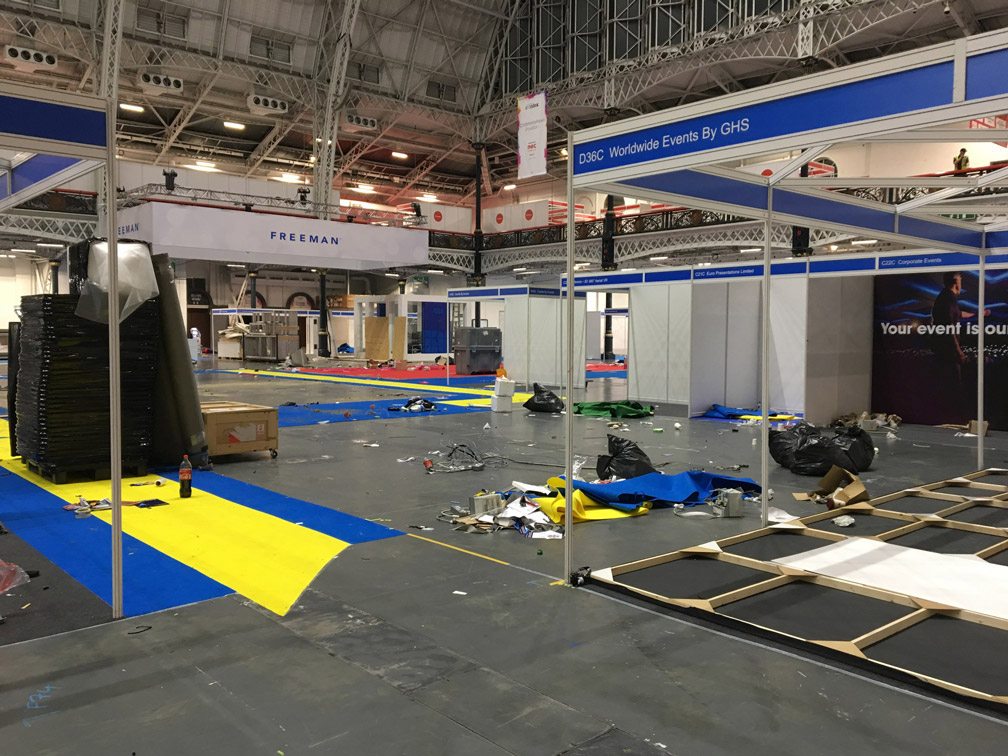
Qu'en est-il de la nourriture ?
Essayer de savoir combien de personnes vont sûrement assister à l'événement permet de mieux anticiper les quantités de nourriture et d'éviter le gaspillage alimentaire. Les restes et les déchets alimentaires peuvent également être donnés à des associations. En outre, un événement peut également améliorer son empreinte carbone en gardant les choses aussi locales que possible en ce qui concerne la nourriture ou les caractéristiques de l'événement.
Concernant les déchets plastiques dus aux stands ?
En ce qui concerne l'utilisation du plastique, les stands des événements génèrent beaucoup de déchets. Tout d'abord, ils sont, dans la plupart des cas, utilisés pour une seule fois. Cela signifie qu'ils sont ensuite jetés et non réutilisés. De plus, les constructeurs de stands les peignent souvent directement sur place, ce qui génère également de nombreux déchets chimiques. Les peintures conventionnelles ne sont pas durables et peuvent entraîner des problèmes de santé car elles contiennent des ingrédients toxiques, mais les peintures naturelles sont une meilleure solution. Les peintures naturelles ont un contenu recyclé, naturel ou biosourcé. Ensuite, pour emballer et protéger tous les éléments du stand (structure, panneaux, etc.), les entreprises utilisent souvent une énorme quantité de plastique qu'elles jettent, au lieu de le garder pour plus tard et de le réutiliser.
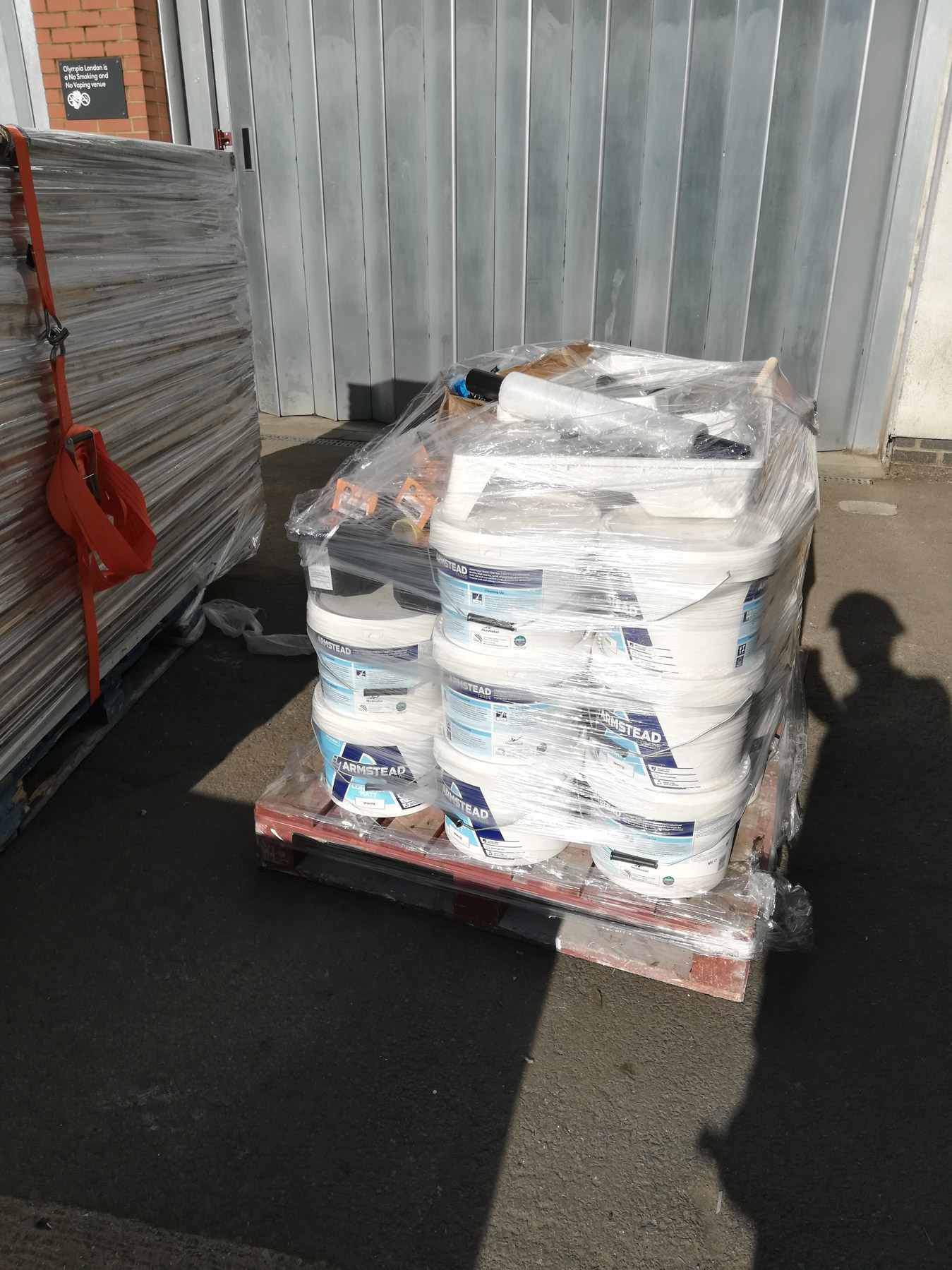
Et en ce qui concerne les lumières ?
Pour les éclairages, les lumières LED sont bien meilleures et permettent d'économiser de l'énergie, mais il est également possible de réduire l'efficacité énergétique pour éviter le gaspillage d'énergie. Un écran blanc est un très bon investissement pour projeter tout le contenu numériquement et éviter tous les panneaux et les affiches imprimées qui sont couramment utilisés pour montrer des données et des informations.
Autres conseils ?
Une façon simple pour un lieu de réunion de devenir plus vert est de s'assurer de recycler tous les déchets générés pendant l'événement, ou d'engager des volontaires pour collecter les déchets. En outre, tous les déchets tels que les structures, les stands et les restes de produits devraient être donnés à des organisations et des organismes caritatifs intéressés. Enfin, il convient de développer un partenariat avec les transports publics et d'encourager le covoiturage. Certains sites ont même obtenu une certification internationale de durabilité, comme le Manchester Central ou l'ACC Liverpool, et le choix de l'une de ces options permet de renforcer la crédibilité d'une démarche durable.
En conclusion, il existe de nombreuses façons de réduire l'empreinte carbone lors de l'organisation d'événements, et il suffit d'un geste très simple pour agir pour le bien de notre planète !
Sources:
https://helloendless.com/sustainable-event-trend/
https://www.eventbrite.co.uk/blog/plan-a-green-event-ds00/
https://aushimkoumar.com/2018/12/21/the-new-trend-in-exhibition-stands/
https://www.sciencedirect.com/science/article/pii/S0956053X09000075
https://www.tsnn.com/blog/why-going-green-matters-your-next-tradeshow
https://globalwarmingisreal.com/2012/11/26/5-industries-that-need-way-more-eco-attention/
https://smashhitdisplays.com/blog/trade-show-news/trade-show-industry-creating-most-of-the-worlds-waste
http://www.enviropaedia.com/topic/default.php?topic_id=183
https://www.tickpick.com/a-guide-to-planning-green-events
Comment est l'environnement de travail chez Konligo ? (article en Anglais)
What is it like to work at Konligo? Record from Capucine, Communication and Sustainability Intern
When I first arrived at Konligo, I didn’t know what to expect. For my future career, I have always wanted to work in an NGO, and this was my first internship. I didn’t know anything about the start-up world and was very curious to discover it.
I rapidly found out that since a start-up is basically a project coming to birth, it also means an exciting new adventure. And a new adventure means enthusiastic people, creative minds and most of all, loooads of ideas. In a start-up, there is always room for initiatives and new thoughts are more than welcome. You can just be your true self and give the craziest ideas you can have (not guaranteed they’ll be accepted but hey, if you don’t try, you’ll never know, right?) And if you fail, you can always retry and learn from your mistakes in order to succeed better later. Taking risks is part of the game!
Be yourself, accept the challenges and confront yourself to get out of your comfort zone. Working in a start-up like Konligo is also about working with people full of energy and dynamism, it is taking risks but not being afraid of it. Just like skydiving! If you don’t want to jump out of the plane, you’ll never experience this very unique excitement and this amazing feeling of watching our dear Earth from above (and the terrible feeling of having your cheeks detached from your face, looking like Shrek’s donkey). Even though a start-up means that you don’t know how the next day will look like, it is good to keep moving, to bring changes and new opportunities. It is based on uncertainty regarding the projects, the team members, the financial situation or how you will be able to address the clients’ needs... You really have to involve a lot of your time and energy in the project but hard work always leads to results, either positive or negative, but at least you can learn from them.
A start-up like Konligo is the place where you bring everyone’s skills together, to create relationships and great team working moments. It is about gathering around a common project, doing several (and sometimes super different) tasks, with different (but always creative) people! In Konligo, it is about communicating, pitching your project, getting feedback, working on, logistics, sales but also writing articles or sourcing prospects, in French, in English, in Dutch… Start-ups don’t know boundaries! Working at Konligo made me discover new sectors, new functions and new people from different cultures, backgrounds and working areas.
For me, a start-up is like a baby to raise and to take care of. The “pregnancy time” is super exciting because it is all about planning how will it go, taking care of everything and being ready for the moment to give birth. And then when raising the “kid”, every development step is extremely important! Since everything there are so many things to do, being involved in such a process is a perfect occasion to teach, but also to learn a lot, from everyone, everything and every kind of situation. It is also the opportunity for “the family members” involved to discover new skills, to confront themselves during hard situations, having ups and downs but this is also part of life! Even struggling times can be appreciated because it is a challenge to overcome and once it’s done, it makes the efforts even more valuable.
So working for like Konligo is to me a unique experience that brings lots of responsibilities, risks to take, opportunities and opens some doors to new people, new discoveries and new adventures!
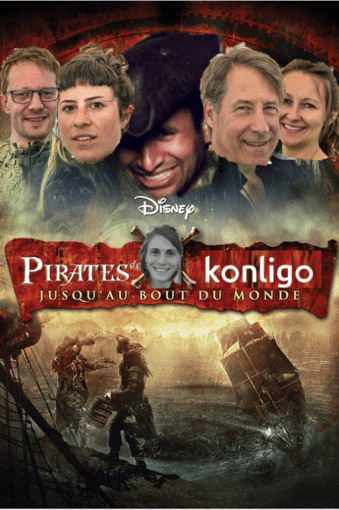
Un business model durable? (article en Anglais)
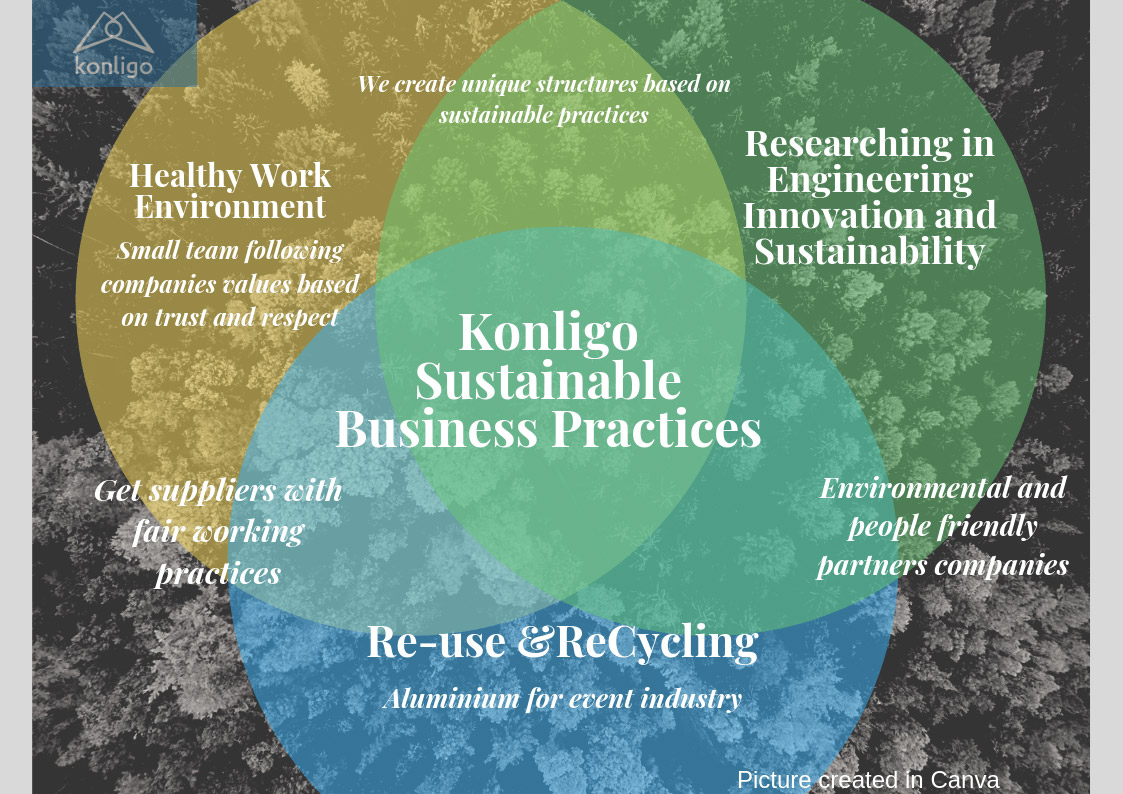
A sustainable business model?
If we start to think about it and look back at how business life has enormously evolved during the last two centuries, who would have thought that industrialization and its practices would get a bad image, and posteriorly the resulting consumerism and waste (like plastic o.a.) must find an end.
Industrialization helped in making our lives easier by increasing our agriculture production and feeding the fast-growing population. People were moving to the cities because men working in the fields were no longer needed. Then, plastic was created and its use increased extremely fast, easily becoming the replacement of other materials due to its ephemeral value.
At that time, people only saw short-term benefits and how life was becoming more practical and easier. Not only private daily life, but also businesses didn’t miss the opportunity to spread and use industrialized technologies and products.
People started to consume indiscriminately and consequently getting rid of stuff as they used it.
Looking towards change
Nowadays we are heading towards developing a long-term vision regarding our planet’s resources. We try to solve the problem before we create it. Indeed we cannot hide our problems on waste islands abandoned in the middle of the sea or dig it deep enough in the ground. Ideas are rapidly transforming as effective solutions: recycling? circular economy?
People are realizing the mess mankind has made and is still making. But actions are starting to rise and finally we can agree that sustainability is the new necessary trend, also in today’s business life.
New ways of doing business
Many companies from all around the world, particularly right after the agreement of Agenda 2030 for sustainable development, have started to modify their business practices and greening up. In fact, many new companies, and especially start-ups are born inspired by this boom. Even multinationals are adopting in a way it is now expected from them.
Being sustainable, is it a long-term necessity or a temporary trend? At least many theoreticians agree upon it and support it globally. There are plenty of benefits linked to sustainability, such as tax reduction, a fact that can be quite interesting for many companies due to the immediate benefit that it will provide them.
As things will change there are many possibilities in improving the working atmosphere and workplaces. Getting sustainable supplies, water filters, plants and recycling in a proper way will have a positive effect on the working conditions and wellbeing of employees. But a step ahead – and maybe even a must - is creating jobs and companies or organizations fully based on the sustainability and circular economy concept.
The media’s role in shaping today’s business
As the media becomes more and more powerful, so does the public opinion as well. Because of this, many companies try to catch people’s attention by proudly showing off with their “greenness”. Everything can be highlighted: using recycled materials, non-testing on animals, giving up plastic and so on. This is actually a positive side effect of a sustainable business model, but sustainability cannot be addressed only for marketing purposes and we all should be careful about misleading greenwashing activities.
Konligo’s mindset regarding sustainability
When it comes down to launching in an entrepreneurial adventure and you are looking for a plan, it’s important that your vision must be linked to what’s important to you and what the world – today and in the future – needs. Many people agree: doing business is all about generating and seizing opportunities. Konligo saw an opportunity to promote its innovative technology in the event industry due to the huge amount of waste generation. In addition to this, while Konligo’s team is growing, people are being carefully selected not only by choosing professionals and experts but also for their particular mindset and values regarding sustainability and environmental issues.
The circular economy concept is a business model reference at Konligo. Circularity reminds us that with every purchase comes a certain reaction and consequence in nature. Every natural cycle has a beginning and renewal ending (from cradle to cradle), but is this really happening with the majority of the products that we own or buy? Not yet! Most of those have a linear cycle (from cradle to grave): after being produced and used – generally in a short lifespan - they end up on the waste pile, polluting our grounds, water, and oceans.
At Konligo, we certainly believe that the model of circular economy should be adopted for many if not all. We aspire to reach sustainable expertise and develop a consequent image through designing structures from recycled materials, giving them a circular life where they can become functional again.
Connectez-vous, c'est Konligo (article en Anglais)
From idea to action
After several years of research on lightweight and transformable structures at the Vrije Universiteit Brussel, Konligo is born to shape all this knowledge and apply it in market-fit plan based on circular economy.
Konligo is created to become a revolutionary company that aims to shake up the event industry with its business model that uses divergent thinking offering innovative and sustainable solutions. At Konligo, we believe that great projects deserve responsible practices and we’re here to offer them.
A solid foundation is what every company must aspire, in order to scale-up and grow successfully. That’s why we’ve put a lot of effort in having a clear mission and we devote a lot of time to team communication and to build strong customer relationships
Reaching goals together
On the path of success - which for every organisation might be defined differently - a company must set down a list of core values and define its mission statement. At Konligo, we actively share those and apply them in our everyday work. All team members know what we believe in as a company and what achievements are possible by working at Konligo. By doing this, we not only communicate what we do, but it also manifests our personal purposes and desires within a strong connected team. This all brings oxygen to our company.
There are no wrong answers, just new lessons
To reach our goals, Konligo constantly seeks improvement by embracing an innovative corporate culture where all insights and opinions are welcomed. Everything can be discussed in a communicative space of trust and transparency where there are no wrong answers — just new lessons.
We share a dynamic and comfortable atmosphere which is built carefully by selecting the right people. Konligo chooses not just the most suitable professionals for each existing role, but in addition to this, team players with positive and respectful mindsets — engaged persons who nicely fit the company’s culture and the rest of the team.
Re-inventing the event industry
Our purpose is to reach recognition as innovators in the field of sustainability. We believe that today’s businesses can mold our lives with even greater importance than before. With a sustainable mindset many contemporary issues can be addressed with the right solutions, building a better future.
It starts to get widely known that building a structure gives rise to tons of end-of-life issues and the problem is that not many companies actually care about it. The most problematic one is the use of toxic materials, generating huge amounts of waste difficult to reuse or recycle. We select our suppliers carefully in order to make sure that we do things sustainably.
Connection is what define us
As a result of everything we believe in and do, our company was named Konligo. It represents perfectly our way of working, the products and solutions we offer and moreover our relation to each other.
Konligo is derived from Esperanto meaning ‘connection’, and being a word from this special language, it reflects our universal point of view on the world and society.
Connection is what defines Konligo. Our deployable structures need strong connections to be supported, settled and balanced, and our team does too in the same way. Beyond our professional relationship we are also friends and celebrate success together.
Get connected and get to know us better — here it’s all about Konligo!
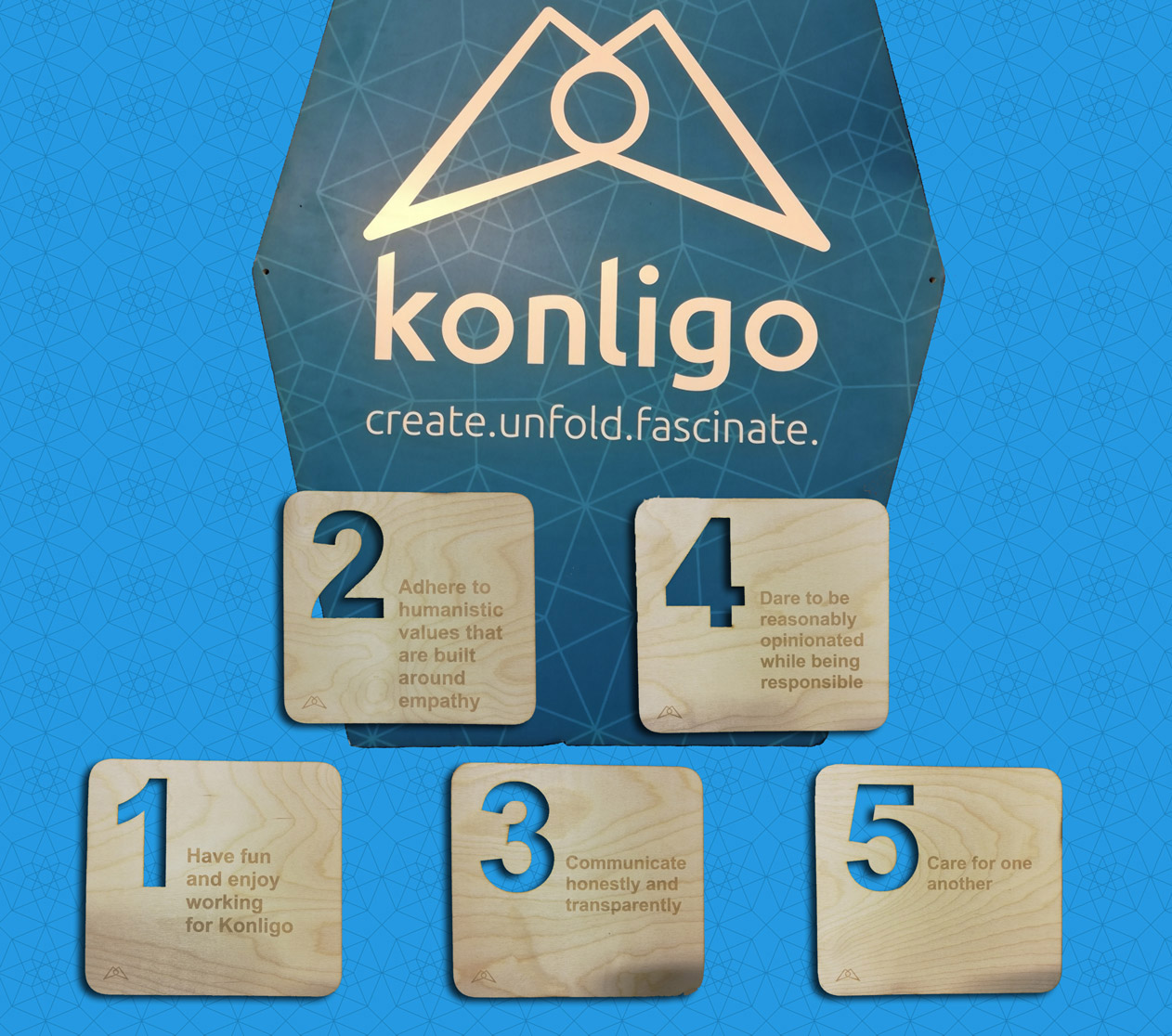
Atelier 03 est notre nouveau partenaire pour production design and light art (article en Anglais)
Atelier 03, the collective founded by Matti Degueldre and Bram Lenaerts arose from the need to provide portable solutions for the event industry. Matti got his experience as a lightdesigner and scenographer for Nachtcollectief and Bram, who is more organization-orientated, hosts a nightlife and open air- concept ‘Transit’.
Atelier 03 acknowledges location as a key-factor for organizing a successful event. Due to regulations and gentrification the landscape for organizing events is rigid. Therefore, they developed Bakbeats. Bakbeats is a bike with personality. Housing a high power projector, a sound system, and a battery pack, it is a completely mobile event device.
Allowing to organise an event anywhere at any time.
Since then Atelier 03 expanded their solutions to mobile shelters, plug-and-play structures and wireless techniques, all the while focusing on short production timeframes and a minimal waste impact on the environment. To achieve these goals Atelier 03 collaborates with various partners, including Konligo.
During Ampere Open-Air, Atelier 03 successfully customized the Fastival into a stage for Boiler Room, the famous streaming platform for electronic music. Using a wireless light system and highly transparent corrugated sheets, Atelier 03 created an intimate stage that blended perfectly with the surrounding nature.
Visit www.atelier03.be and follow their instagram page atelier.03 for more information.
Luno (seulement en Anglais)
It all begins with an idea. We received a demand from a customer, Atelier 03, who wanted a new original pop-up cinema that could also be used as a medium for artworks such as a fresco. Creativity is our main resource and our software is a unique tool resulting from many years of research and several PhDs that allow us to model an infinite number of shapes from scissor beams made of recycled aluminium. Thus, the idea of Luno was established: evolving according to its position between a flat screen and a curved screen, in the same way a moon changes its shape as nights go by.

After several months of hard work on product development including conception and calculations, we arrived at the most iconic step for a start-up: the workshop. We all gathered at our workshop, under the capricious lights, exposed to the chilly winds during the winter season to screw, unscrew, punch holes, and assemble all the small and big pieces to form a beautiful aluminium puzzle. We then had to adapt new dimensions for horizontal deployment, a novelty in our products since our products were only able to be deployed vertically until now. This breakthrough in our new product considerably altered the impact of gravity, posing an uncertainty of whether the structure would work perfectly or if it would be as beautiful and eye-catching as we hoped.
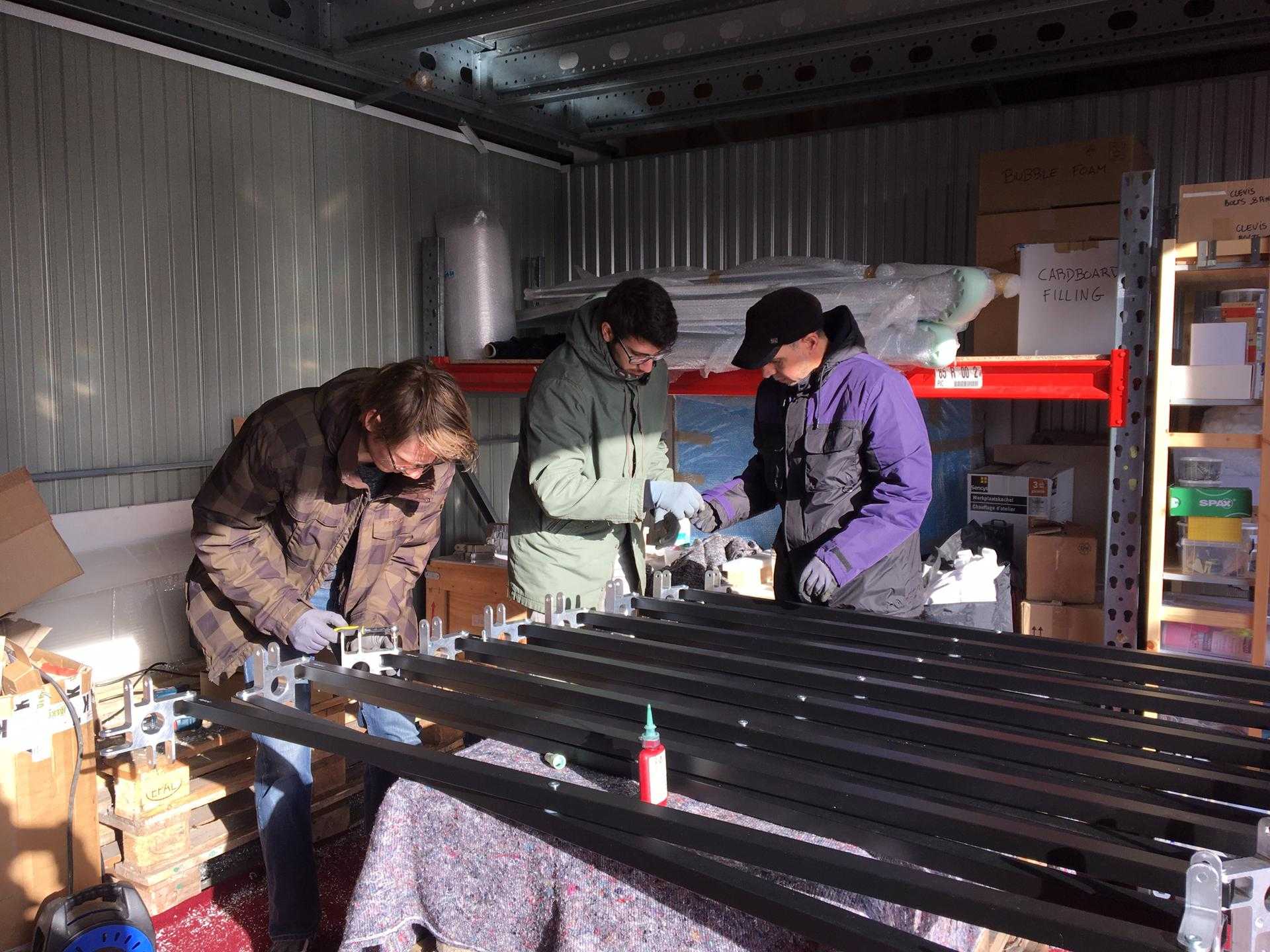
We do our best, but there are times when bad surprises occur. However, it wasn’t the case this time. We forgot about all the worries that had crossed our minds when we unfolded the structure for the first time. Seven months after the first brainstorming, these were the first steps of the aluminium animal we raised. Now we will observe the impact of the Luno, hoping that, for once again, the Konligo magic will take place and gather people.
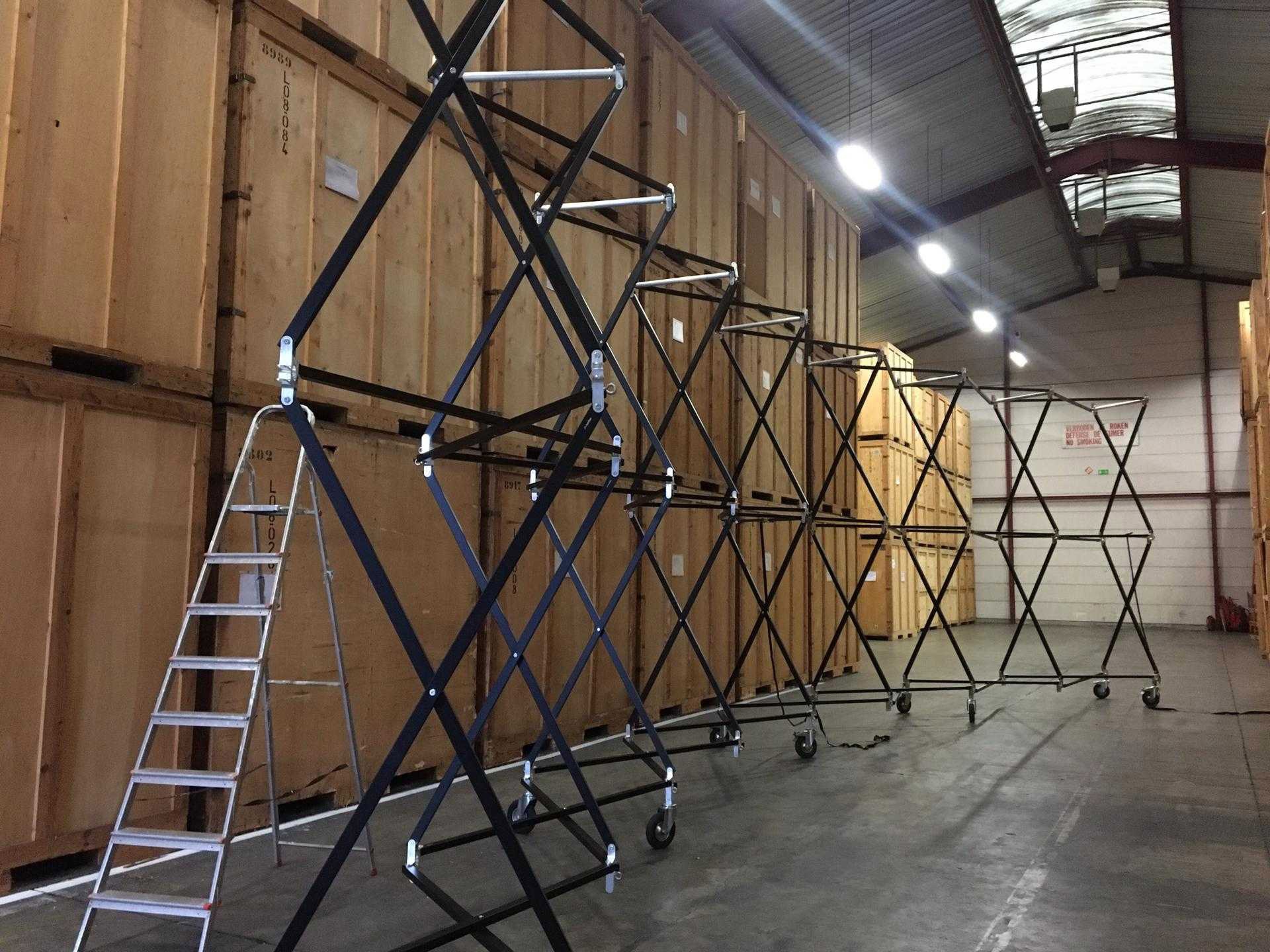
Pourquoi est-il 115 fois plus intéressant d'investir dans les startups que de garder votre argent dans un compte d’épargne ?
Grâce à la réforme du Tax Shelter en 2014, la Belgique offre aux personnes comme vous et moi un incitatif fiscal considérable, nous permettant de faire un peu plus avec notre argent que de le laisser stagner sur un compte d’épargne. Au lieu d’un profit de 126 € sur un compte d’épargne après 5 ans, vous pouvez désormais obtenir un bénéfice d’au moins 14.500€.
Les comptes d'épargnent ne rapportent plus rien
Vous avez peut-être déjà eu cette discussion avec des amis : "mon compte d'épargne ne me rapporte rien", "j’ai l’impression qu’avec l'inflation mes épargnes perdent de plus en plus de leur valeur", "je ferais mieux d'investir mon argent dans quelque chose qui m’apporte un plus grand rendement ". Et ben figurez-vous que grâce au Tax Shelter, votre argent peut maintenant vous rapporter une belle somme, et le risque est couvert à 45%!
Illustrons ceci avec l’exemple suivant : vous avez 10.000€ sur votre compte d’épargne auprès d’une banque traditionnelle et vous souhaitez évaluer votre "investissement" au bout de 5 ans. Par facilité, nous prenons un intérêt de 0,25%*. Après la première année, vous obtenez 25€ d’intérêts sur les 10.000€, après la deuxième année, vous obtenez 25,06€ sur 10.025€, etc. Au bout de 5 ans, vous avez eu un intérêt de 125,62 € ou un "bénéfice" de 1,26% … C’est bien triste, non?
Votre risque est couvert à 45% si vous investissez dans une start-up!

La situation est différente si vous décidez d'investir 10.000€ dans une startup via une prise de participation.
Supposons que vous investissiez en novembre 2019. Vous recevrez DANS TOUS LES CAS une déduction fiscale de 45% du montant investi. Cela signifie que vous recevrez déjà 4.500 € en novembre 2020 (**), quelle que soit la situation de la startup dans laquelle vous investissez.
Pour les 5 prochaines années, vous ne devez pas vous attendre à des dividendes étant donné qu'il s'agit d'une startup. Par contre, ce qui est intéressant est ce que l’on nomme « l’exit » : après 5 à 7 ans, vous pouvez généralement revendre vos actions. Dans le cas le plus plausible, la société aura d’ici-là doublé son potentiel de marché depuis le début (son potentiel de marché peut aller jusqu’à x10 mais soyons conservateurs dans notre exemple). Autrement dit, cela veut dire que vous pouvez vendre vos actions de 10.000€ à 20.000 euros. En 5 ans, vous avez donc réalisé un bénéfice de 14.500€, soit 145% de votre capital initial.
Supposons que la valorisation de la société ou du potentiel de marché ne change pas d’ici là - ce qui est peu probable car une startup doit croître au cours de ses premières années - vos actions valent toujours 10.000€. Votre bénéfice est alors l'avantage fiscal dont vous avez bénéficié, soit 4 500 € ou 45%.
Veuillez noter qu'un tel investissement est à haut risque. Cela signifie que la start-up risque aussi de faire faillite et que vous perdrez donc votre argent. Grâce au Tax Shelter, vous aurez néanmoins perdu 5.500€ au lieu des 10.000€ initiaux.
Résumé dans un tableau
Vous pouvez également avec un impact positif!
Il est donc financièrement intéressant d'investir (une partie de) votre épargne - que vous pouvez mettre de côté pendant 7 ans - dans les startups: vous pouvez obtenir un rendement de 145% ou plus, ce qui est 115 fois mieux que les pauvres 1,26% de votre compte d’épargne. De plus, vous pouvez également soutenir les entrepreneurs et l'économie belge. Si vous pensez qu'il est important que votre argent ait également un impact positif sur la société, il existe des plateformes telles que Lita.co qui facilite le crowdfunding pour diverses startups à impact. Notre start-up Konligo, par exemple, en fait partie et vous pouvez déjà investir avec un montant minimal de 1.000€ (et donc en fait 550€)!
N'investissez pas dans n'importe quelle start-up
Il est important de ne pas investir dans n’importe quelle startup. Voici un certain nombre de points à considérer :
- Analyser le marché de la startup et son (ses) produit(s). Est-ce un marché à potentiel et le produit est-il suffisamment innovant ?
- Quel est leur plan financier ? S'attendent-ils à doubler ou à quintupler leur valeur de valorisation après 5 ans ? Est-ce réalisable par rapport à ce qu'ils ont réalisé jusqu'à présent ?
- Les points ci-dessus restent des spéculations. En soi, personne ne sait estimer cela avec précision, ce qui rend le choix d’un placement difficile et risqué. Ce qui ne repose pas sur des spéculations et que vous pouvez bien analyser, c’est l’équipe. Cela reste l'élément le plus important dans chaque startup. Est-ce une équipe soudée qui adhère pleinement à sa vision et sa mission et dont les membres partagent les mêmes valeurs fondamentales ? Les membres de l'équipe principale ont-ils déjà travaillé ensemble (dans ce projet ou dans d'autres) ? Sont-ils complémentaires pour faire face au divers défis qu’une start-up doit affronter ? Sont-ils disposés à prendre des risques et à faire primer l’intérêt de la startup au-dessus de leur propre intérêt ?
Avez-vous encore des questions sur le crowdfunding? Consultez ce lien intéressant.
N'hésitez plus et prenez l'avenir de votre argent en main, car vous pouvez l’utiliser pour avoir un impact social.
(*) Pour les banques tel BNP, KBC, ING, Belfius: le total des intérêts sur leurs comptes d’épargne s’élève entre 0,11 et 0,22%
(**) Il est plus correct de mentionner que le montant de 4.500€ sera réduit du montant total d’impôt à payer sur une année fiscale entière.

